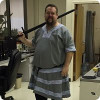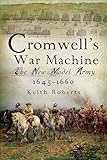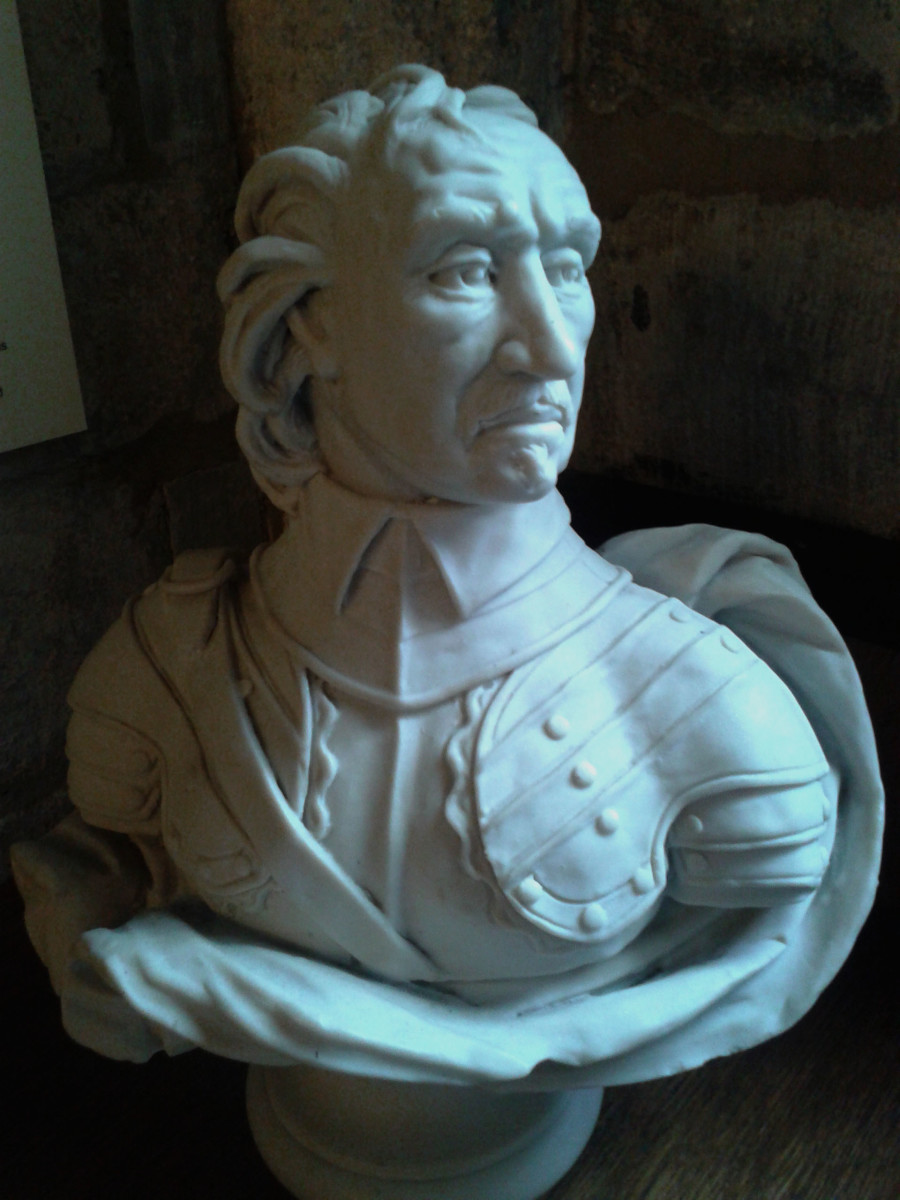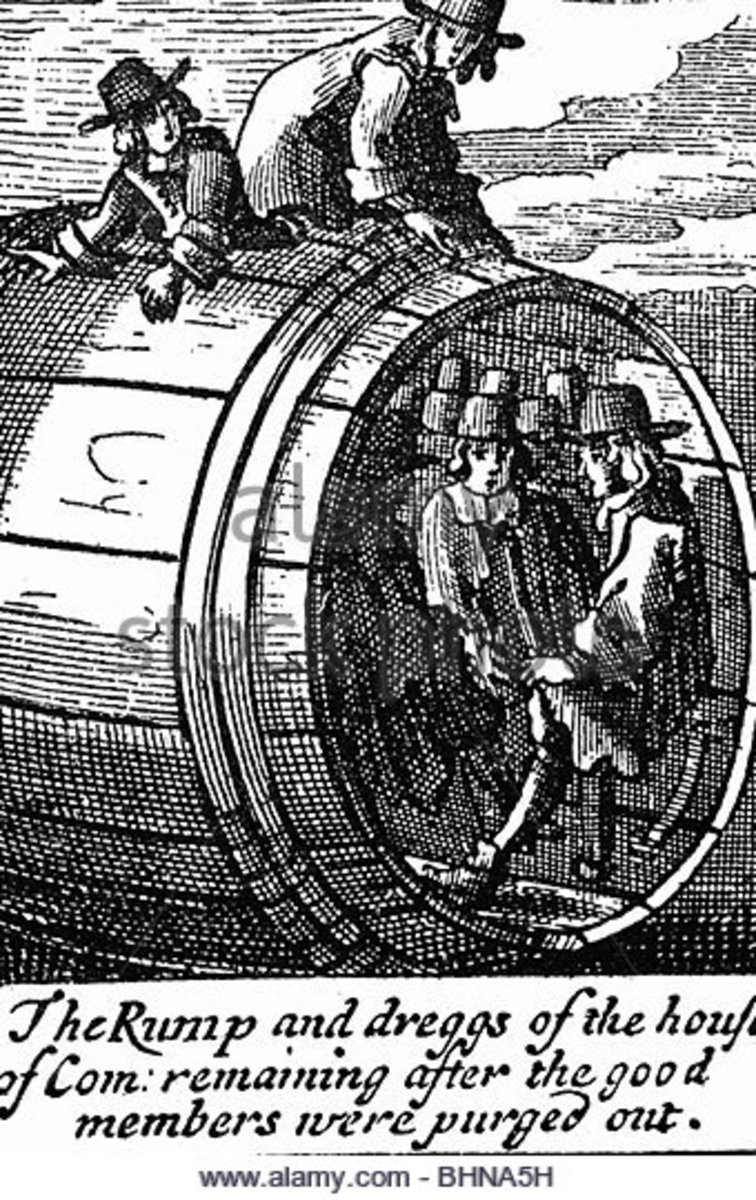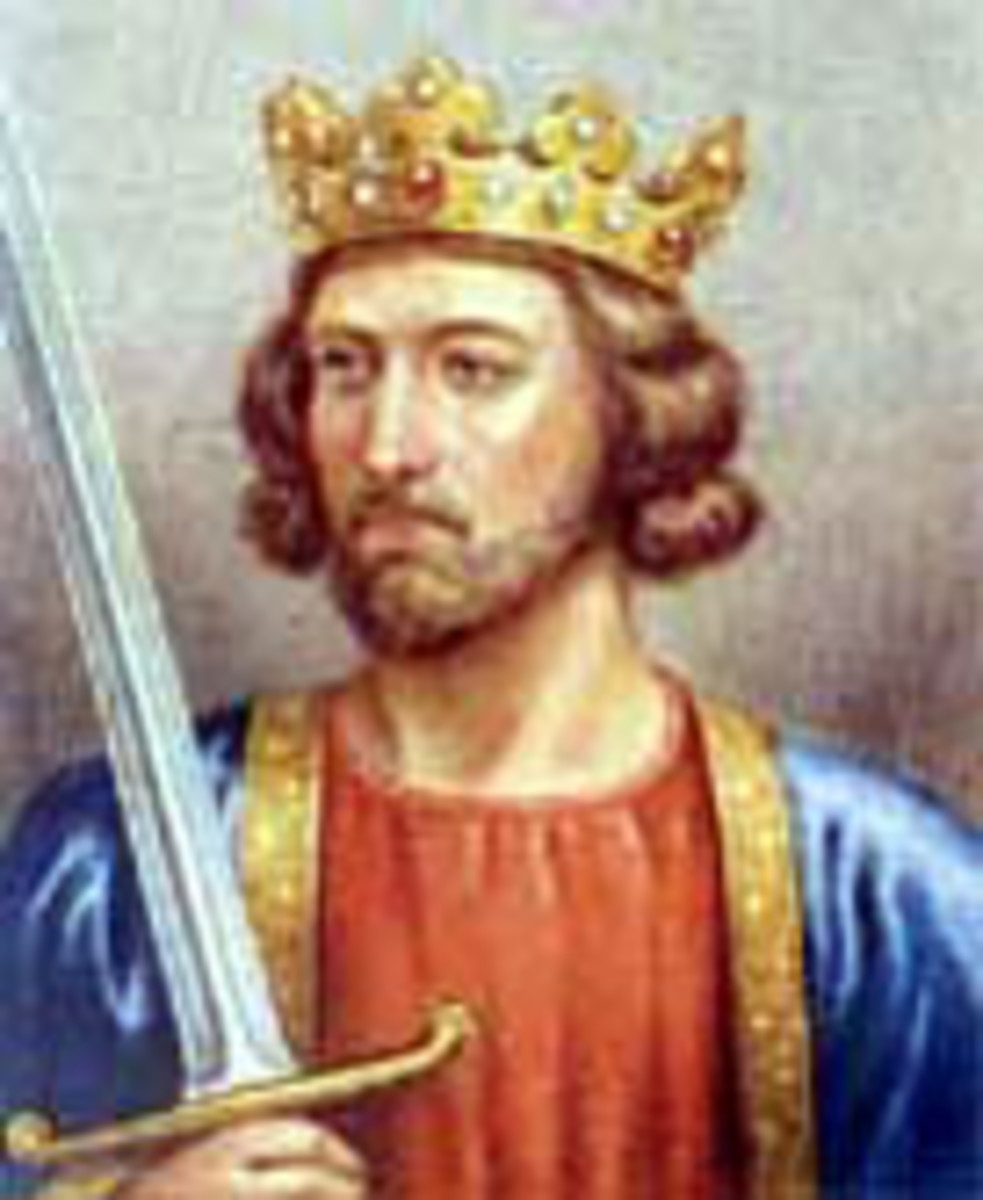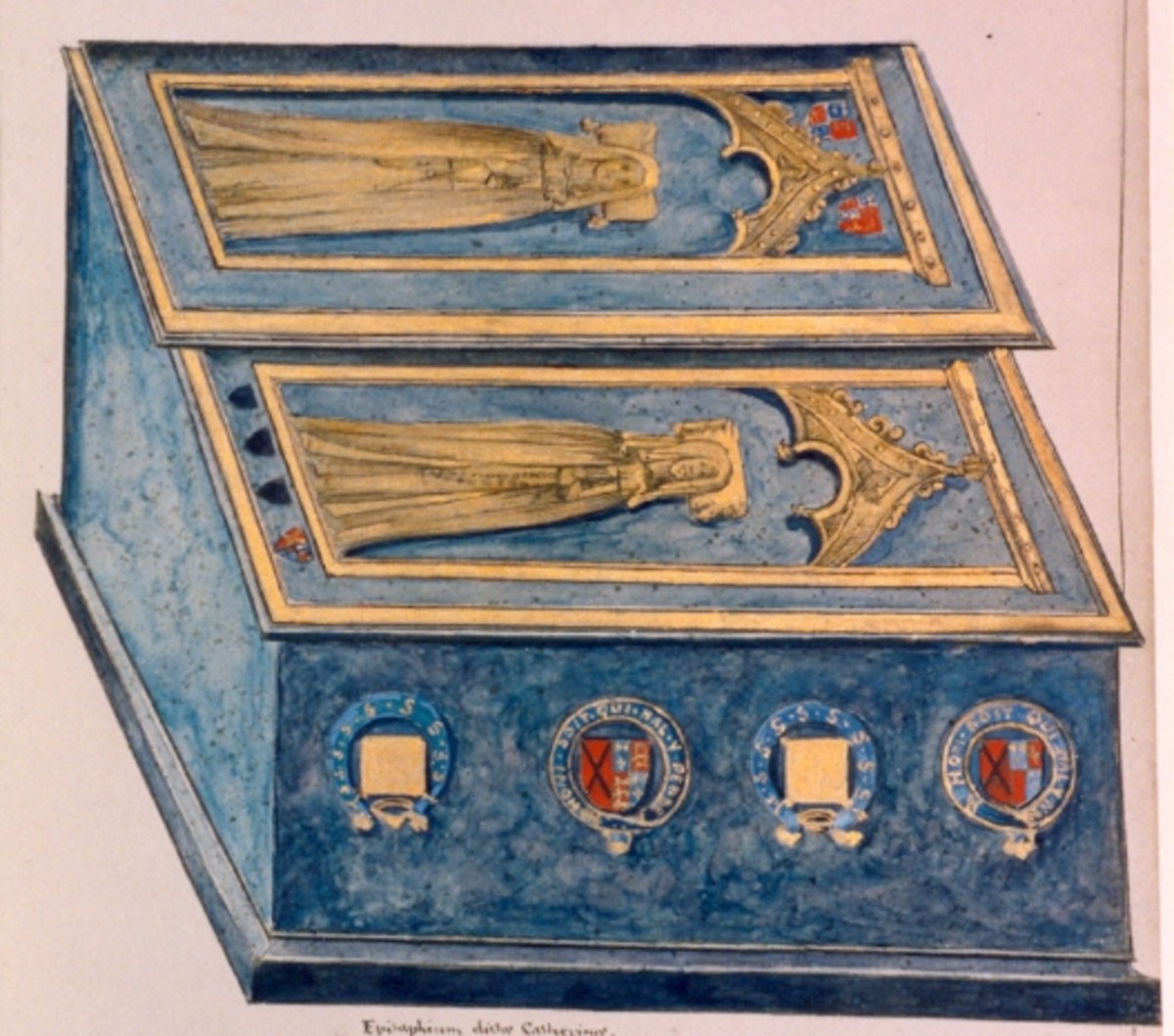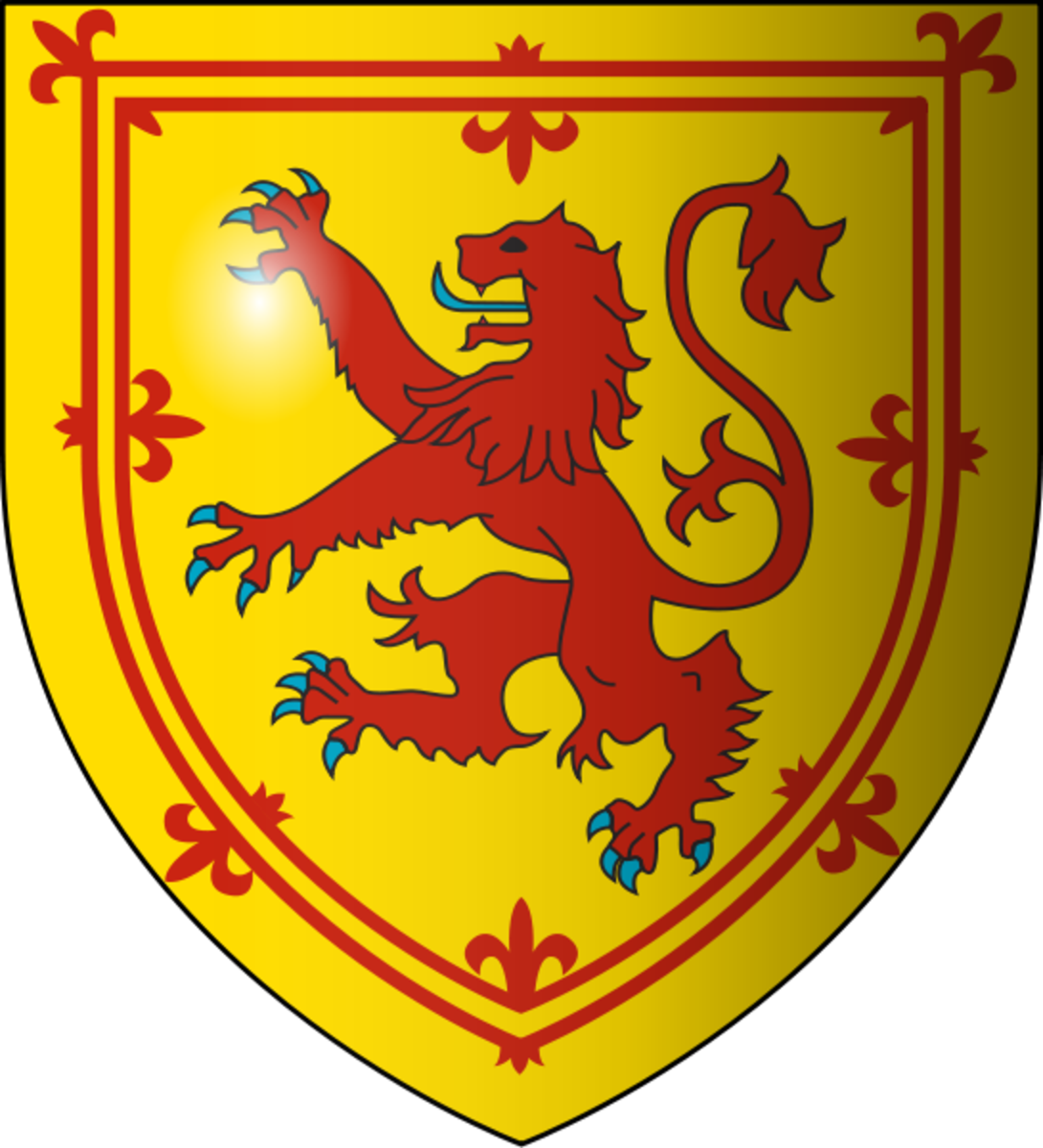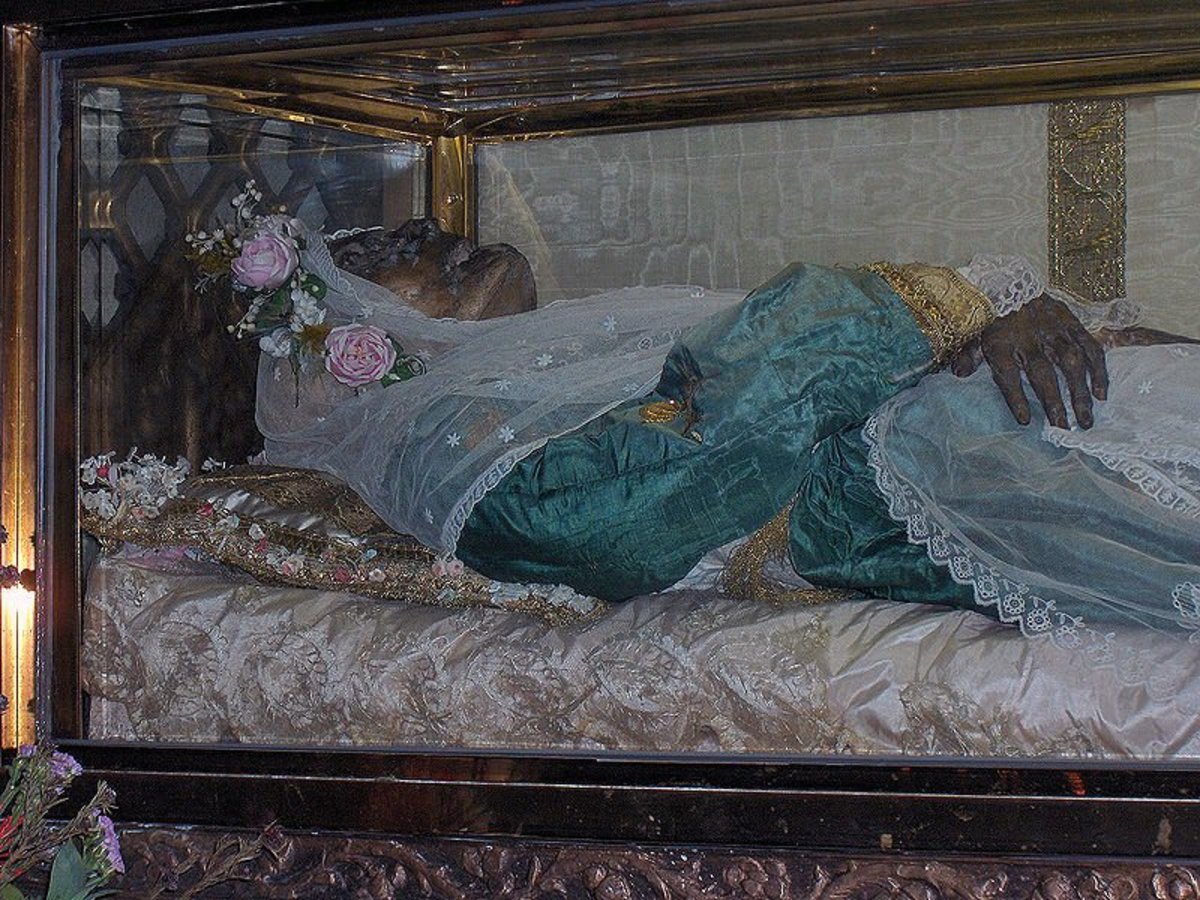Oliver Cromwell as Lord Protector
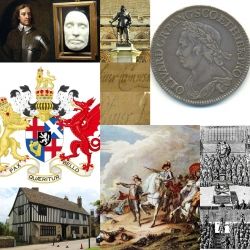
Machiavellian Despot or Hero of The People
Depending on your historical point of view Oliver Cromwell as Lord Protector can easily be painted as a Machiavellian figure who seized power and reigned as a despot, or as a man of the people who established England as a republic, if only for a brief time.
England in 1642 broke out into a civil war which saw Parliament butt heads with Royalists and ended with the Rump Parliament executing Charles I for treason and exiling his son Charles II. This formed the Commonwealth of England and created a power vacuum which Cromwell seized upon to eventually set up his Protectorate in 1653.
There can be no doubt that Cromwell ruled with an iron fist, squashing any opposition, but was he a blood thirsty tyrant, or a man attempting to stabilize his country and set the stage for a more democratic England?
Image is of various artifacts and images relevant to the life of Oliver Cromwell as Lord Protector of England, all images have been verified as public domain.
Man Or Monster - You Decide
![By TRAJAN 117 This vector image was created with Inkscape. (Derivative work, based upon [1], and using and) [GFDL (http://www.gnu.org/copyleft/fdl.html) or CC-BY-SA-3.0-2.5-2.0-1.0 (http://creativecommons.org/licenses/by-sa/3.0)], By TRAJAN 117 This vector image was created with Inkscape. (Derivative work, based upon [1], and using and) [GFDL (http://www.gnu.org/copyleft/fdl.html) or CC-BY-SA-3.0-2.5-2.0-1.0 (http://creativecommons.org/licenses/by-sa/3.0)],](https://usercontent1.hubstatic.com/9679292_f520.jpg)
Was Oliver Cromwell a people's hero, or a mad despot?
Oliver Cromwell's Early Years
Parliamentarian; Short and Long
Oliver Cromwell's house in Ely
A lot of effort is put towards showing that Oliver Cromwell was a simple man of the people and not a great Lord. This is true, to a point, he was however a member of the gentry, middle gentry, in other words he was part of the nobility. He is a direct descendant of the sister of Thomas Cromwell, the Cromwell family made a fortune by taking over monastery property during the Reformation. He was born in Huntington at Cromwell house on April 25th 1599, and for close to 40 years he remained in obscurity.
While he would, in later years, become known for his ties to the puritan movement growing in England at the time, he was never as fanatical a supporter that most puritan leaders were known for. Some scholars postulate that he may have been puritan more out a need for a support base to grow his power than anything else.
In 1628 Cromwell is granted his first crack at politics by becoming the Member of Parliament for Huntington. This Parliament is disbanded by Charles I in 1629 and Cromwell made only one poorly received speech. Charles refuses to call another Parliament and rules without one until 1640, once again Cromwell returns, but this time as an MP for Cambridge. This time Cromwell's failure to shine is not due to his own flaws, but rather the fact that this, the infamous Short Parliament, was, well, short. Three weeks was the total duration of the Short Parliament. In 1942 another Parliament was called, this one was not short, it became known as the Long Parliament, and was the fuse that started the English Civil War, and of course Cromwell was in the thick of things, now bursting free from obscurity and into the spotlight tied to the movers and shakers in the puritan movement in both the House of Lords and the House of Commons.
The Civil War
And the New Model Army
Battle of Naseby, by an unknown artist. The victory of the Parliamentarian New Model Army, under Sir Thomas Fairfax and Oliver Cromwell, over the Royalist army, commanded by Prince Rupert, at the Battle of Naseby (June 14, 1645) marked the decisive turning point in the English Civil War.
When the issues before the Long Parliament could not be resolved the Parliament and King Charles I were at odds. Eventually this came to blows and England was at war with itself. It is in the civil war that Cromwell goes from relatively unknown Member of Parliament with a few connections to the movers and shakers to a mover and shaker in his own right. He becomes known as an effective military leader, despite having no experience or training in this area, he helps to reshape the military structure of the English soldiery, and eventually becomes a signatory on the death warrant for King Charles I.
So how does a minor Member of Parliament go from that station to one of the most powerful men in the Empire in the space of a nine years? By building a better army.
When the war broke out the Parliament was using militia men, they were fierce and useful, but despite the Parliaments advantages in money and resources they were still loosing ground. A new strategy was needed, and the New Model Army was the strategy that turned the tide. The differences were subtle on the surface, but the repercussions were far reaching. These were professional soldiers, in it for the cause and for the pay, not local militiamen who were tied to the local garrison and would not/could not be deployed elsewhere. The New Model soldiers were an English Army to be deployed anywhere in the empire at the whim of parliament. They were mainly veterans and zealots with a vested interest in removing the crown and setting up a commonwealth, which they successfully did in 1647.
Cromwell As Lord Protector
1st Lord Protector of the Commonwealth of England, Scotland and Ireland
When the Barebones Parliament failed as miserably as the Rump Parliament John Lambert and other supporters of Cromwell put forth a new constitution known as the "Instrument of Government" which granted Oliver Cromwell the position of Lord Protector of the Commonwealth of England for Life (Scotland and Ireland were later added to this title). While the Irish may revile him for his actions in the Irish Confederate Wars ( strong argument could be made that Cromwell was committing outright genocide in Ireland), once in power he strove to rebuild England to its former glory. He ended the first Anglo-Dutch War, helped bring Jewish back to England who had long felt exiled from Britain, and helped keep tensions with the American Colonies in check making sure they had some semblance of self governance. All in all his tenure as Protector was a success.
He was so well liked as a Protector that Parliament offered him the crown. Cromwell however refused claiming that providence removed the office of the King from England he would not see it set up again. This proved to be true, in his lifetime the monarchy never recovered, and his son Richard Cromwell was granted the role of Lord Protector. On September 3rd 1658 Oliver Cromwell died of Malaria. Unfortunately his son Richard did not have the political insight of his father and he had neither the backing of the army nor the Parliament and in May 1659 he was forced to resign.
A Crisis of Power
From Rump to Barebones
After the civil war Britain enjoyed a brief period of a republic state ruled by the Rump Parliament, but this was short lived, a new constitution was needed and the Rump Parliament couldn't decide on what it would look like. On April 20th 1653 Oliver Cromwell got fed up with the Rump Parliament not being able to come to terms with anything and dissolved the parliament by force. Legend holds, but cannot be verified, that he lost control and yelled to his fellow Member of Parliaments "you are no Parliament, I say you are no Parliament; I will put an end to your sitting". While this outburst probably did not occur it is evident that he siezed the mace, the symbol of parliamentarian power and demanded that the "bauble" be taken away. He placed the mace under the protection of one of his most trusted advisors Charles Worsley, under the law the Parliament cannot meet without the mace present.
While this could be seen as Cromwell seizing power, it doesn't appear that that was his intent. When the Rump Parliament was tossed out Cromwell formed a new one, this one became known as the Barebones Parliament. Cromwell did not sit on this Parliament, but rather watched from the sidelines, further demonstrating that his dissolution of the Rump Parliament was not a bid to seize power. They were tasked with finding a solution to the constitutional and religious questions plaguing the country. After it became apparent that there were more radicals in the Barebones Parliament than previously thought the parliament was again dissolved for fear of what these radicals would do if given power.
The King Is Dead
Long Live the Commonwealth
In 1648 King Charles I is brought before Parliament on charges of High Treason. Thanks to some dastardly shenanigans by Colonel Thomas Pride none of the Members are Parliament who are still loyal to Charles can make it to the trial (this action becomes known as Pride's Purge). Cromwell takes part in the trial (pictured right) and the Parliament finds King Charles I guilty and Charles I was executed on 30 January 1649, and his son Charles II was exiled.
Cromwell's is one of 59 signatures on the death Warrant of King Charles I cementing his place in history amongst the Rump Parliament that committed regicide and set up a new rule. A republic of sorts, under military rule, answerable to the Rump Parliament. This was not to last though, soon Parliament would name the 1st Lord Protector of the Commonwealth, and Oliver Cromwell would take this new role to heart, purging the empire of his enemies and setting up a new despotic system of government.
Hung for Regicide
Justice Done Posthumously Or Indignity to a Body
After Richard was forced to step down Charles II was invited back to England to take the crown and return the monarchy to the Empire. In order for the monarchy to be restored those who orchestrated the trial of Charles I had to be convicted of regicide or Charles II's claim to the throne would be null and void. Cromwell, Bradshaw, and Ireton were singled out as the prime agitators and, even though all three were already dead, their bodies were dug up and ritualistically hung.
© 2012 Jeff Johnston
